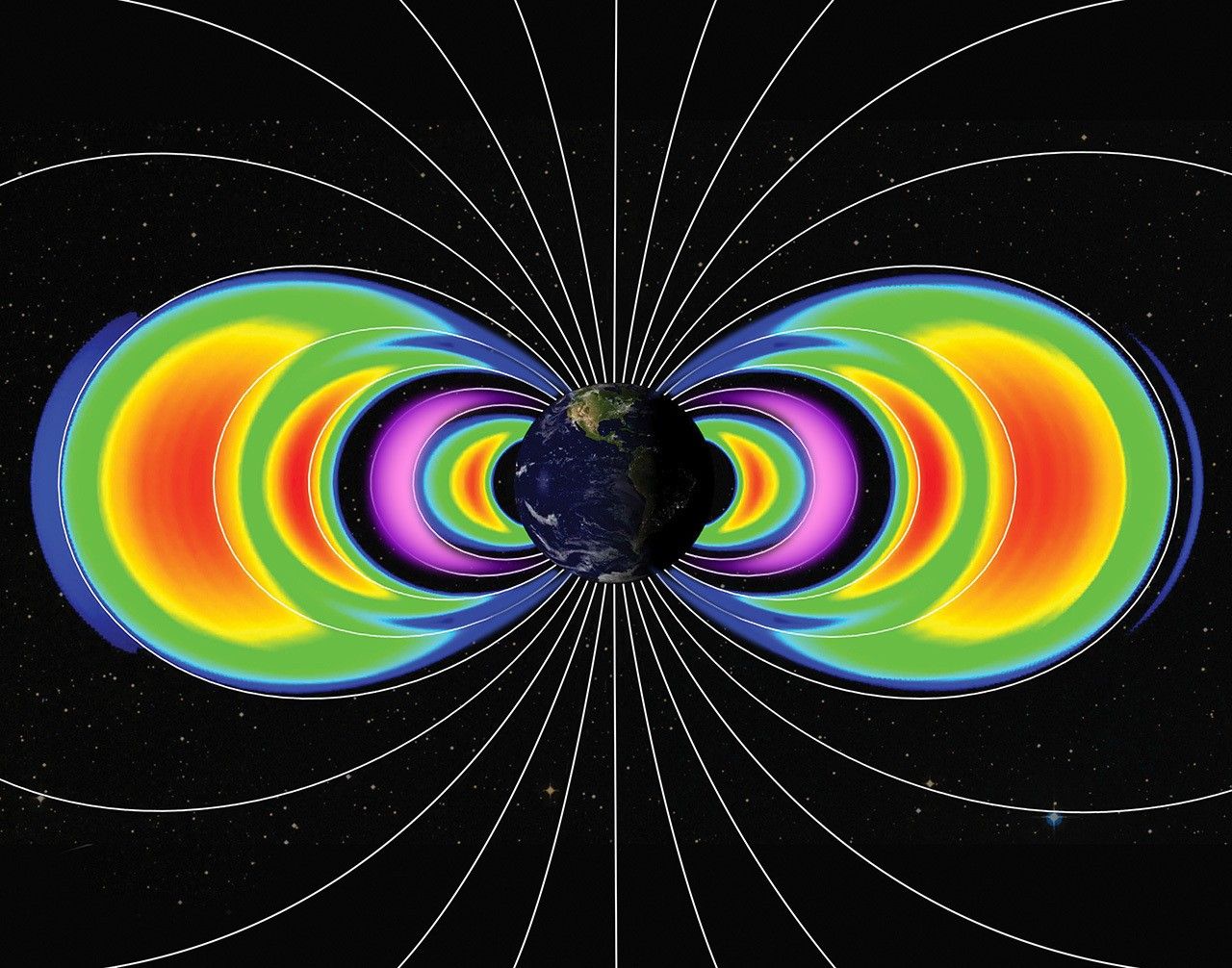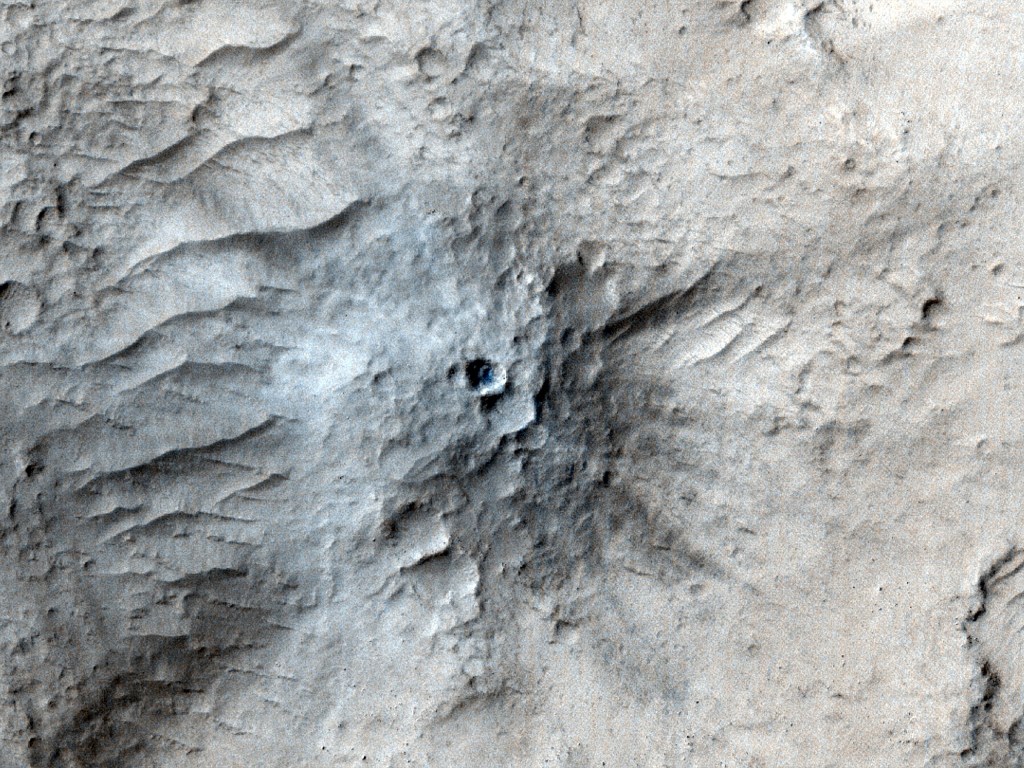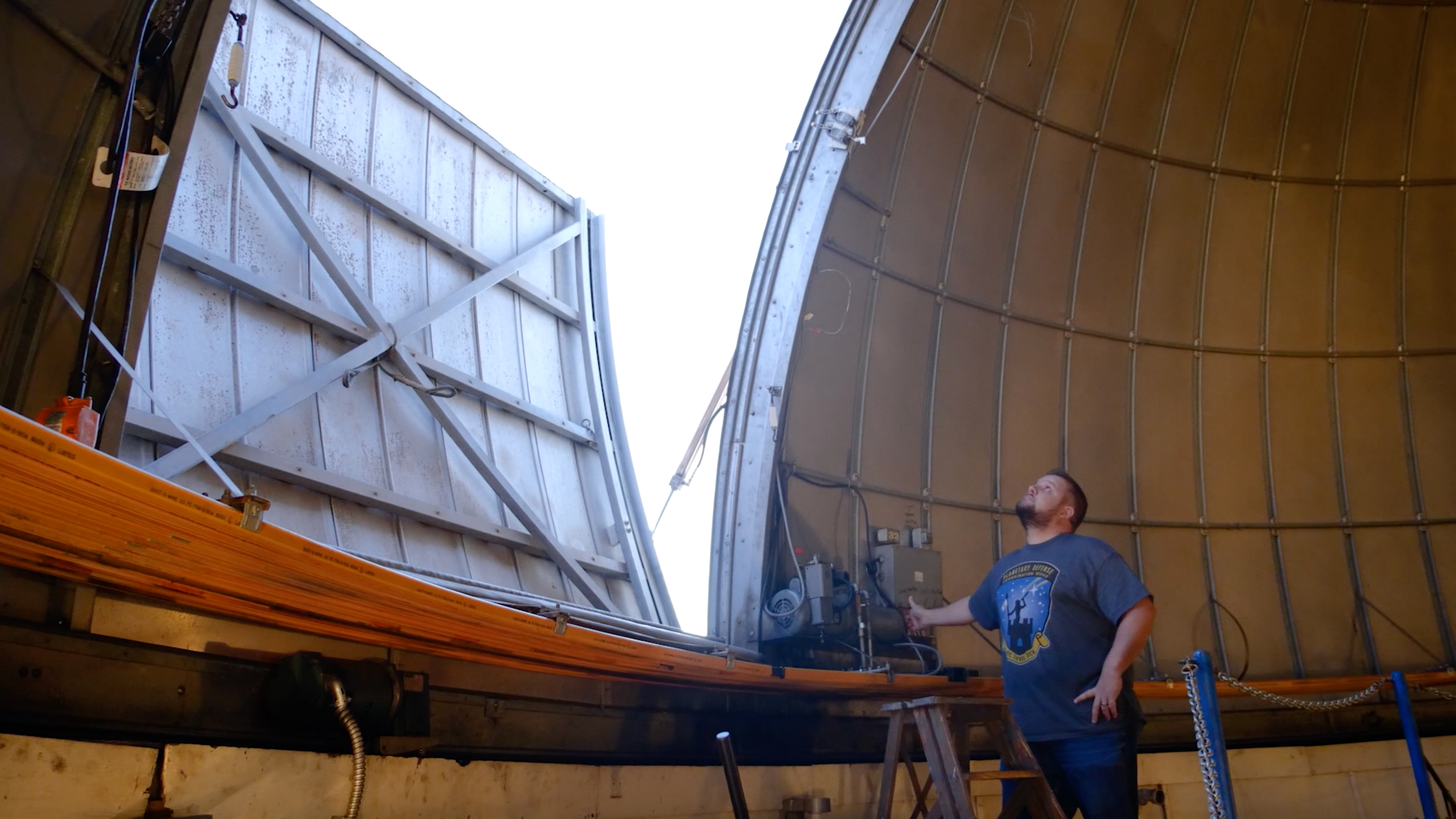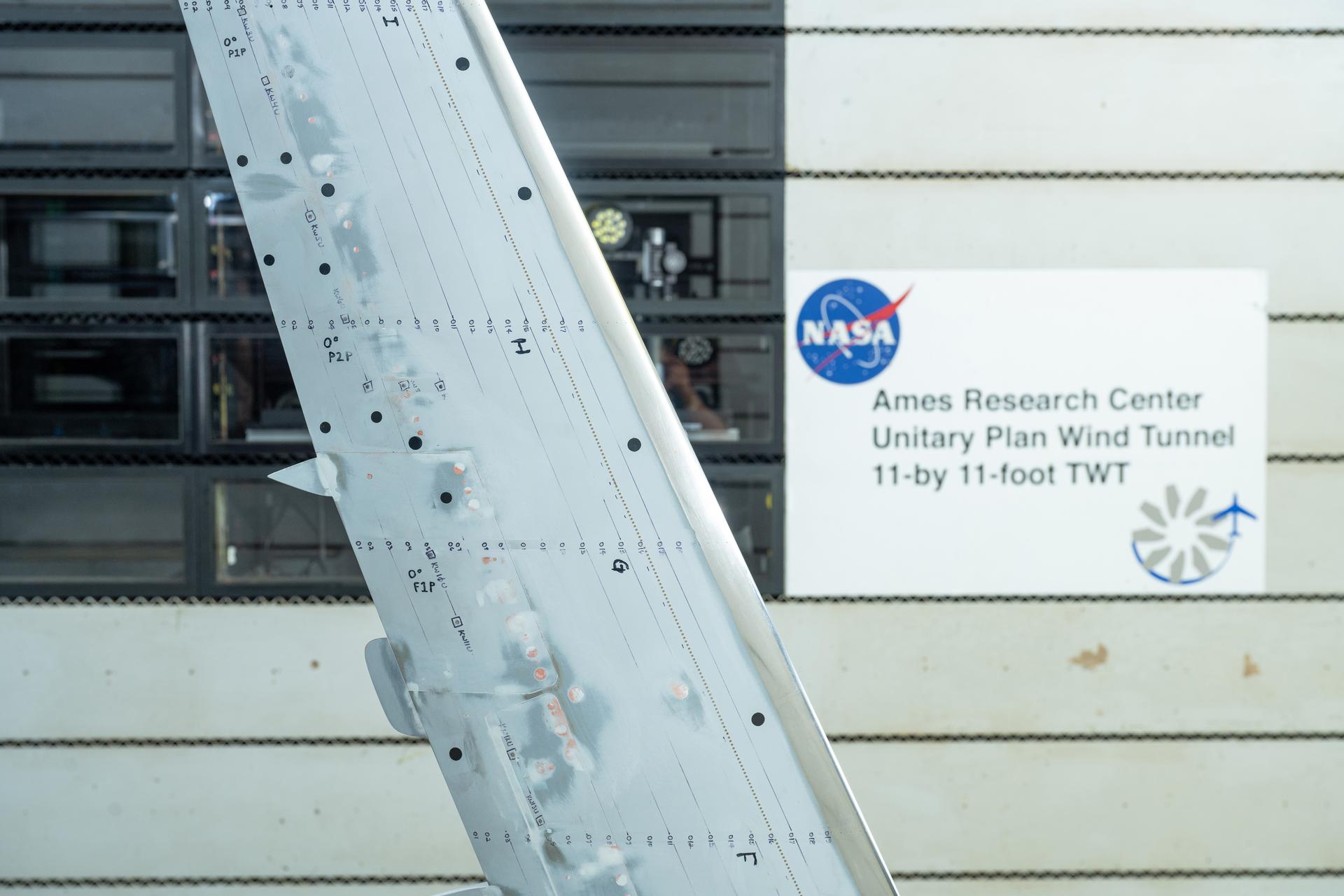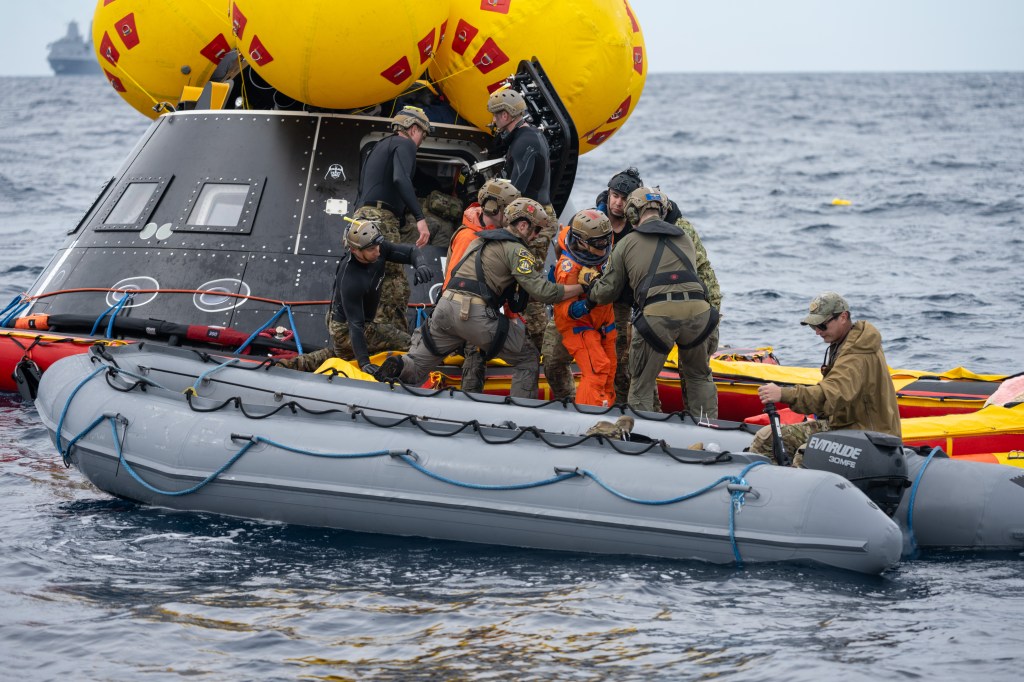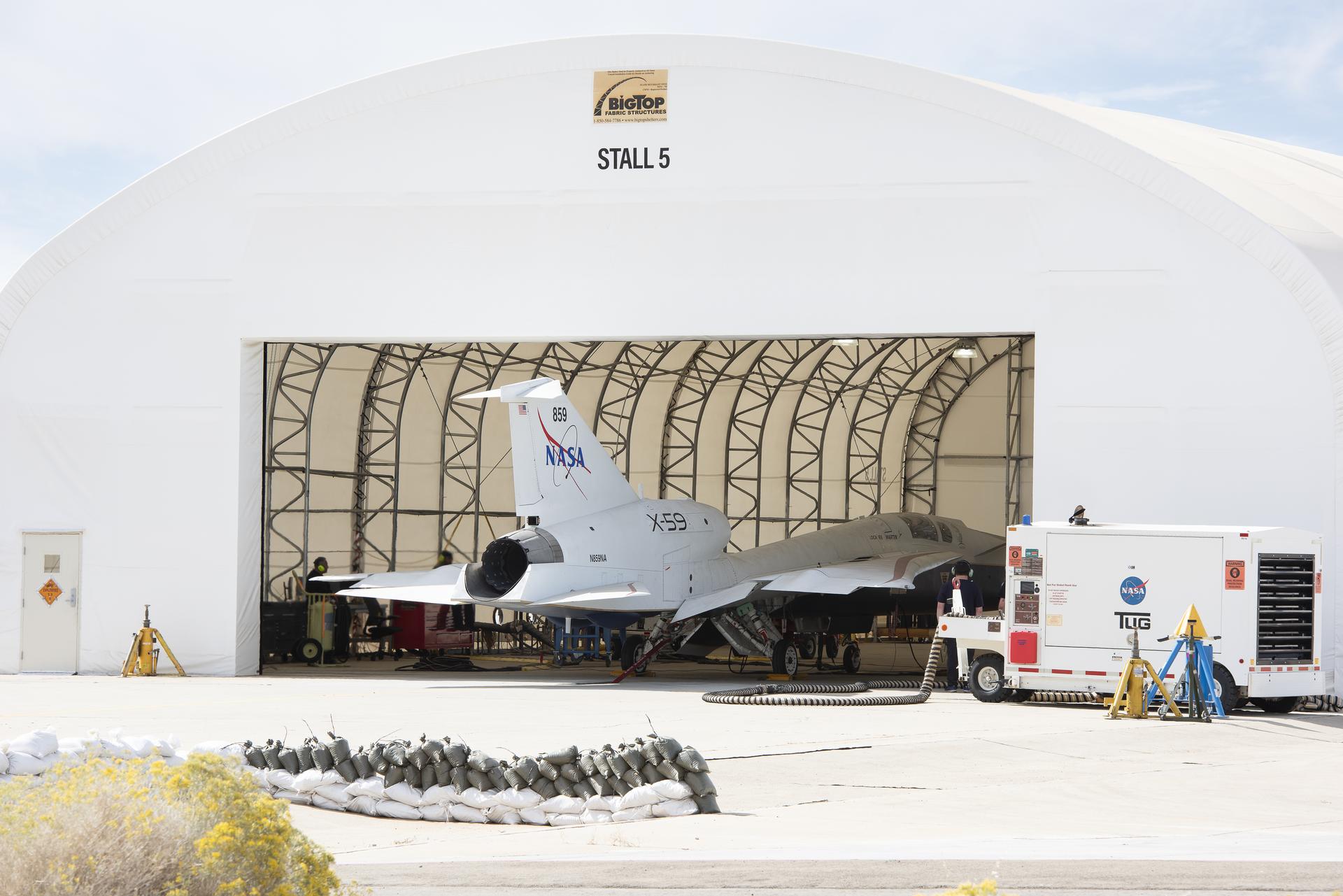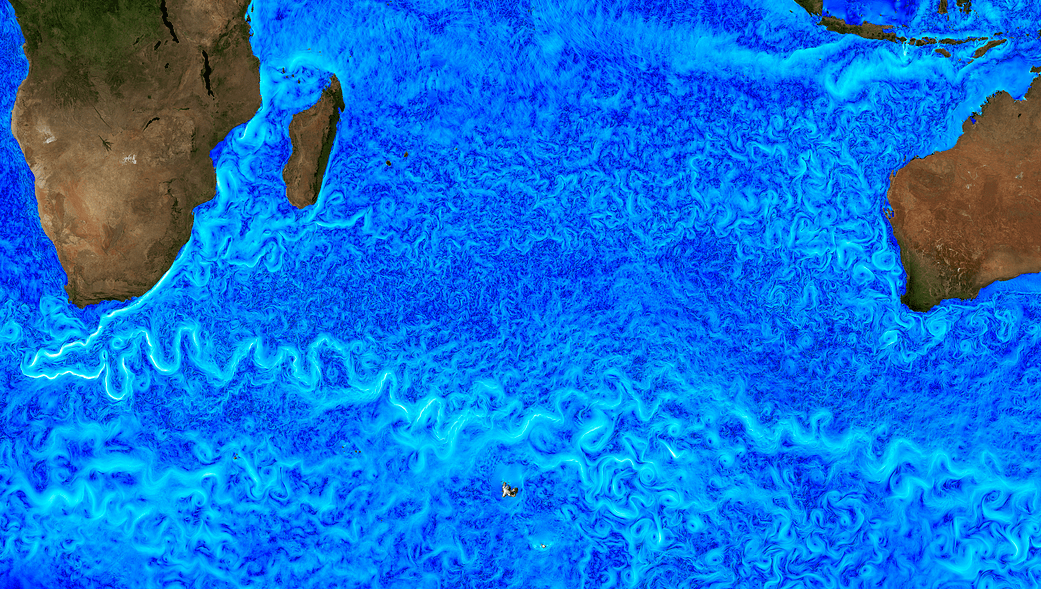Scientists with the Estimating the Circulation and Climate of the Ocean (ECCO) project have produced a time-evolving global simulation of Earth’s liquid and frozen ocean system with approximately one-kilometer horizontal spacing and 90 vertical levels—providing the oceanic equivalent of a telescope that can reveal the state of the entire ocean/sea-ice system in unprecedented detail.
This snapshot of the simulation shows the speed of surface currents in the Antarctic Circumpolar Current region, south of the Indian Ocean. The ocean is teeming with cyclonic and anticyclonic eddies, which are visible in the image. Like their atmospheric counterparts (high-pressure and low-pressure systems), but much smaller in size and larger in number, these eddying flows play a key role in the transport of properties in the ocean.
The global ocean simulation was run using the Massachusetts Institute of Technology general circulation model (MITgcm), across tens of thousands of cores on the Pleiades supercomputer at the NASA Advanced Supercomputing facility at NASA’s Ames Research Center in Moffett Field, California.
Related: NASA is showcasing more than 35 of the agency’s exciting computational achievements at SC14, the international supercomputing conference, Nov. 16-21, 2014 in New Orleans.


